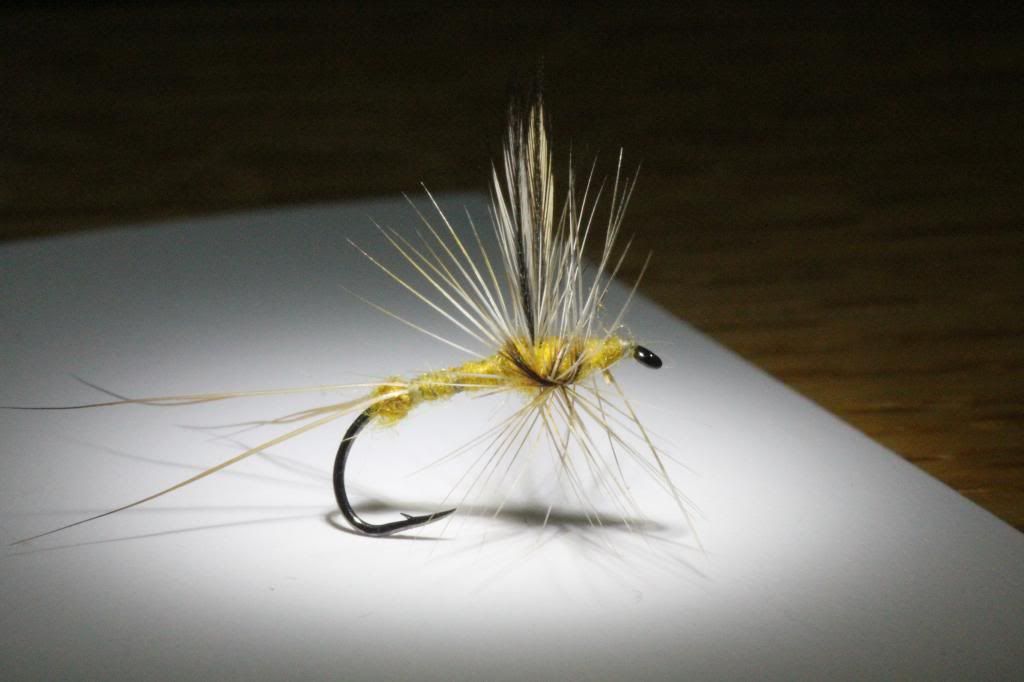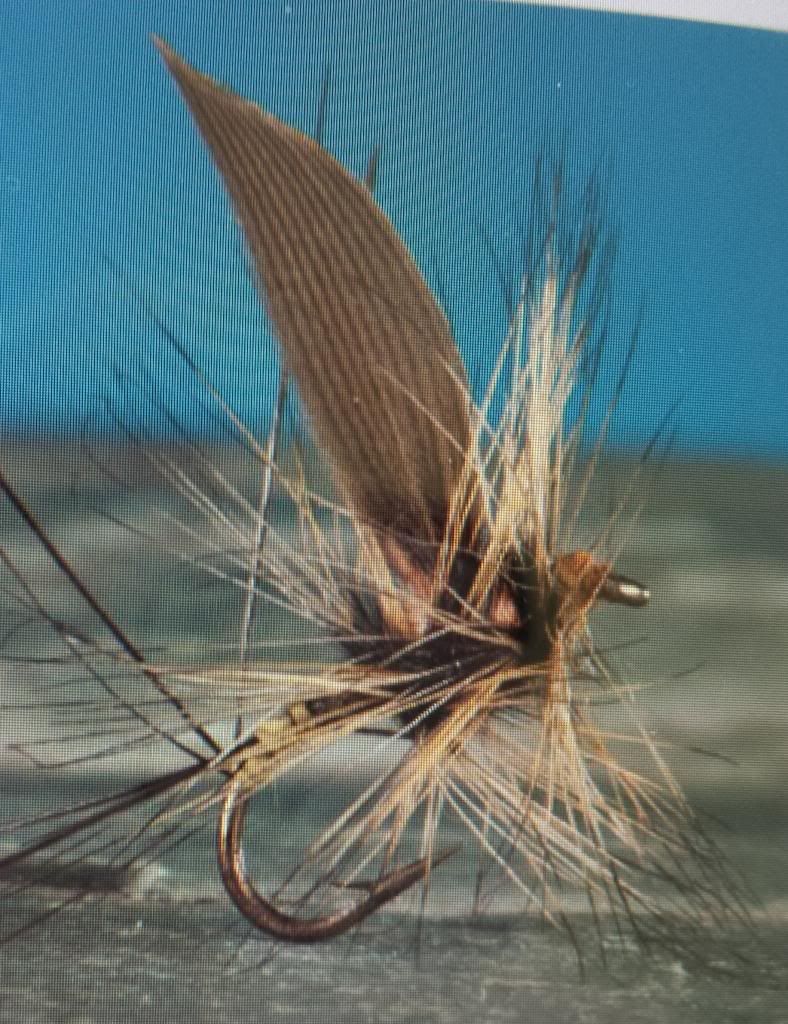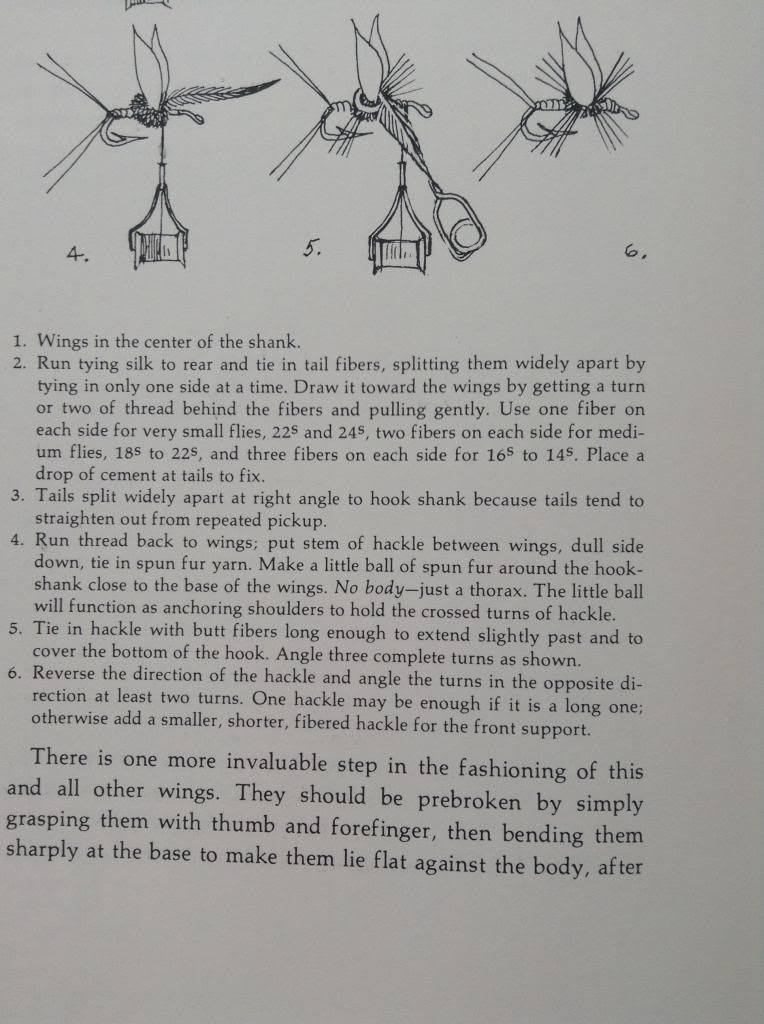I didn't have appropriate winging material, but wanted to tie one of these anyway.
To me, the beauty of this style of fly is that it lands correctly, and, I do not like clipping hackle to get a proper float.
Anyway, my feeble attempt at one of Vince's patterns. I know he did not believe in dubbing the body, but I thought I would.





 Reply With Quote
Reply With Quote


